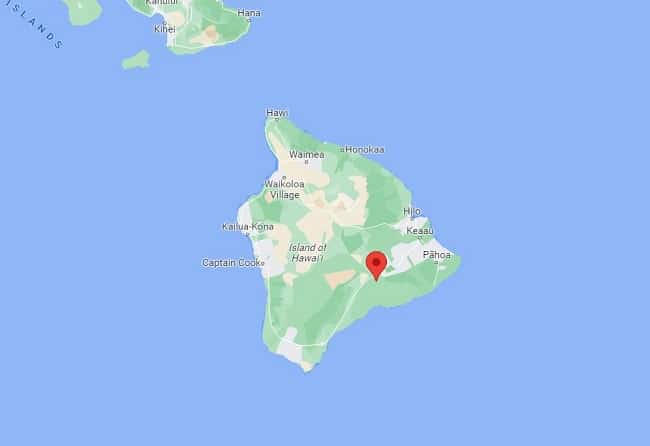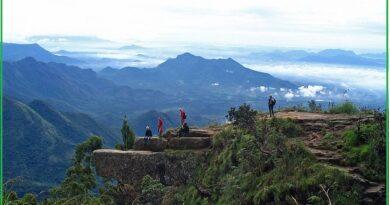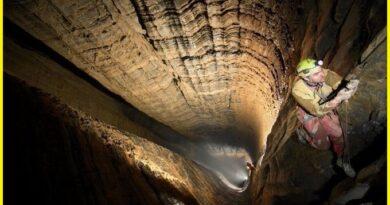Kilauea Hawaii Volcano National Park-An Active Shield Volcano
Kilauea Volcano Hawaii
Kilauea is the world’s most active and well-known shield volcano. It has been erupting continuously since 1983. The volcano is part of the Hawaii Volcanoes National Park, which is a popular tourist destination. Visitors can view the volcano from designated areas, and take hikes to explore the surrounding landscape.
In recent years, Kilauea has experienced several periods of increased volcanic activity. In 2018, a series of eruptions resulted in the destruction of hundreds of homes and the displacement of thousands of residents. The eruptions also produced a large lava lake, which attracted worldwide attention. Despite its potential hazards, Kilauea is an important scientific research site, providing insights into the processes that drive volcanic activity. It is also an important cultural and spiritual site for the Hawaiian people, who have a deep connection to the land and its geological features.

Kilauea volcano location-Kilauea volcano is located on the southeastern part of the Big Island of Hawaii, which is the largest and southernmost island in the Hawaiian archipelago. It is situated within the Hawaii Volcanoes National Park, which encompasses over 330,000 acres of land, and is approximately 48 km. southwest of the town of Hilo.
Kilauea’s summit caldera is about 4 km. wide and contains a number of vents and craters, including the Halema’uma’u crater, which has been the site of recent volcanic activity. The volcano is also part of the larger East Rift Zone, which extends from the summit to the southeastern coast of the island and is the site of most of the volcano’s historical eruptions.
Kilauea volcano map-The map shows the location of the volcano within the Hawaii Volcanoes National Park, as well as the park’s visitor center, main roads, and hiking trails. The summit caldera, which contains the Halema’uma’u crater, is located in the southeastern part of the park, while the East Rift Zone extends from the summit to the southeastern coast of the island. The map also shows the location of the nearby town of Hilo, which is the largest town on the east side of the Big Island and is located approximately 48 km. northeast of the volcano.

Kilauea volcano eruption
Kilauea volcano has experienced many eruptions throughout its history, with the most recent significant eruptions occurring in 2018 and 2020-2021. In May 2018, a series of fissures opened up in the lower East Rift Zone of the volcano, producing lava flows that destroyed hundreds of homes and displaced thousands of residents. The eruption also produced a large ash plume that affected air travel in the region. The eruption lasted for several months, and by August 2018, the activity had ceased.
Also, read- What Is The Cretaceous–Paleogene (k–pg) Boundary?
In December 2020, a new eruption began, with a lava lake forming within the Halema’uma’u crater at the summit of the volcano. The lava lake grew in size and eventually overflowed onto the crater floor, producing impressive lava fountains and flows. The eruption lasted until May 2021 and caused limited damage to the surrounding areas, with most of the lava flow confined to the inside of the park.
Kilauea’s activity can be unpredictable, and scientists continue to monitor the volcano for signs of future eruptions. The Hawaiian Volcano Observatory provides up-to-date information on the volcano’s activity and any potential hazards to the surrounding communities.

Kilauea volcano activity
There are many things to do and see in and around the Kilauea volcano. Here are some popular activities:
- Visit the Jaggar Museum: The museum, located near the summit of the volcano, offers exhibits on the history of the volcano, its current activity, and its impact on the surrounding area. Visitors can also view the Halema’uma’u crater from the museum’s observation deck.
- Watch the lava flow: During periods of volcanic activity, visitors can often view the lava flow from safe viewing areas. The National Park Service provides information on the best locations to view the lava.
- Attend a cultural program: The park offers a range of cultural programs, including traditional Hawaiian music, dance, and storytelling, providing visitors with a deeper understanding of the history and culture of the area.
- Go on a guided hike: Many tour companies offer guided hikes in and around the volcano, providing visitors with expert knowledge and insight into the volcano’s history, geology, and cultural significance.

Kilauea volcano tour
Kilauea volcano is a popular tourist destination and there are several ways to experience the volcano and its surrounding areas. Here are some options:
- Hawaii Volcanoes National Park: This park is the primary destination for visitors to the Kilauea volcano. The park has numerous hiking trails, scenic drives, and ranger-led programs to explore the volcano’s diverse landscapes and learn about its geology, ecology, and cultural history.
- Helicopter tours: Helicopter tours are a popular way to view the volcano from above. Several companies offer guided tours that fly over the summit, the crater, and the surrounding landscape, providing a unique perspective on the volcano’s size and scale.
- Boat tours: There are also boat tours that offer views of the coastline and ocean entry points of the lava flows, providing an up-close look at the volcanic activity.
- Guided tours: Many tour companies offer guided tours of the volcano, providing visitors with expert knowledge and insight into the volcano’s history, geology, and cultural significance.
It’s important to note that the volcano’s activity can be unpredictable and some areas may be off-limits due to safety concerns. It’s always recommended to check with the Hawaii Volcanoes National Park and local authorities for the latest updates before planning a visit or tour to the Kilauea volcano.




Pingback: Gruta do Lago Azul Bonito-A Limestone Cave in Brazil - Geotourism
Pingback: Hawaiian Havens-The Most Luxurious Resorts in Hawaii - Geotourism